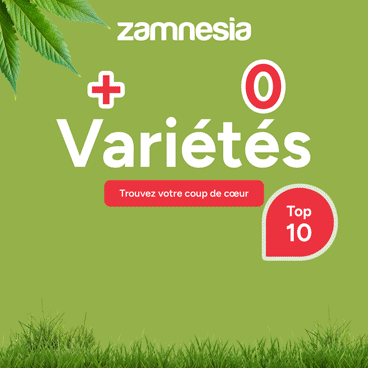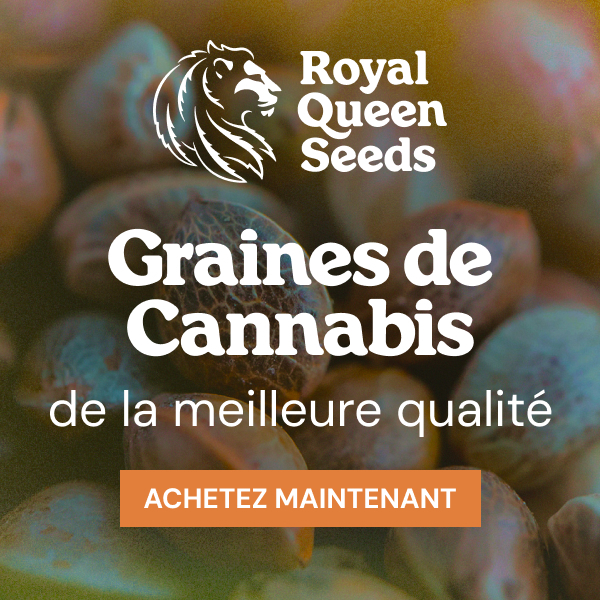Tirah Valley
élevé par Indian Landrace ExchangeIci vous pouvez trouver toutes les informations sur Tirah Valley de Indian Landrace Exchange. Si vous recherchez des informations sur Tirah Valley à partir de Indian Landrace Exchange, consultez notre : Informations de base, Galerie, Dégustation, Trophées, Recensions, Comparaisons Directes, Lignée / Généalogie, Hybrides / Croisés, Commentaires de l'utilisateur, pour cette variété de cannabis ici sur cette page et suivez les liens pour obtenir encore plus d'informations. Si vous avez des expériences personnelles avec la culture ou la consommation de cette variété de cannabis, veuillez utiliser les télécharger des liens pour les télécharger dans la base de données!
Informations de base
Tirah Valley is an mostly indica from Indian Landrace Exchange et peut être cultivé indoors and outdoors Indian Landrace Exchange Tirah Valley n'est/n'a jamais été disponible en graines féminisées.
Description de Indian Landrace Exchange
This is the selection from the 1.a regional landrace population for Tirah Valley. This plant was around 8-9 ft. tall, with excellent overall vigor, from resin production to a tall sturdy frame. One of the best features on this selection is the size and the shape of its bracts, which are ovate and bulbous, allowing for greater surface area for the resin production.
It had an intense spicy aroma upfront with a tinge of sweetness towards the end. The smells as discussed previously are mostly defined by aromas of eastern spices like Clove, devil's dung, cinnamon or often a full-blown sumptuous complex like a mughlai curry.
The regional landrace variety (1.a) is used to produce the infamous red hashish which gets dried over and snowed on before it goes for the sieving, a process which imparts the signature red hues to the final produce. The Tirah hashish is famous for its extremely oily and sticky textures, and a heavy couch lock effect which keeps the brain wide awake as the feeling of weightlessness hits the body. The effects are overwhelming and often overpowering for people not used to this kind of strength and complexities in the high, which is a by product of both the genetics and the way they're processed in the Tirah Valley.
Tirah Valley spans from the North West of the Pakistan towards the North, the climate doesnt show a great deal of variance when it comes to precipitation and temperature ranges, However, the onset of the snowfall and the duration of the snow coverage itself, differs greatly between the North Western and the extreme Northern span of the Tirah Valley respectively.
Tirah Valley is a collection of countless small and big cannabis farms, The plant and the culture was brought here by Afridi tribe, approximately 600 years ago (as per the local consensus). Afridi's identify themselves as a subset of the larger Pashtun tribe which is spread across both Pakistan and Afghanistan.
The cannabis populations in the valley have been domesticated over the decades by the farmers and have adapted to the most suited expression in response to their respective ecological habitats. Although there's a plethora of diversity within farms to farms in expressions, ranging from very squat and short plants to classical highland expression. Every other embodiment of the Tirah valley heirloom brings something different to cherish.
Tirah Valley is regarded as one of the biggest resin production grounds in the Pakistan and also the state doesn't interfere much with tribes who grow cannabis in this valley, so they can produce garda (dry sifted resin) from the big resinous flowers after drying it.The art of growing cannabis and making hashish within families is traditionally handed down from one generation to another keeping the infamous hashish carnivals and an entire nation lit up.
Tirah Maidan (Valley) in Khyber Agency or Khyber Pakhtunkhwa province is situated at an altitude of over 2000-2500+ meters of floor elevation at 32°- 33° North of equator, just on the cusp of Pak-Afghan border towards the southern fringes of Hindu Kush ranges and around 150 km South West of Chitral.The valley is placed perfectly in the transition zone (33-34 N) where we typically begin to see cannabis populations expressing significantly different phenotypic characteristics.
The preparation of the ground begins as early as first week of March when the farmers thoroughly plow the fields using cows or oxes, the soil is then also fortified each year with some cow dung manure, to support the surplus growth of cannabis. The farmers draw water through canals at ease from nearby natural sources of water like seasonal brooks or rivers, to feed the cannabis crops. whereas, during the monsoon there's nearly 900mm of rainfall that takes place in the district so watering the crops isn't really a problem here unlike some of the other drier places like Afghanistan or Balochistan, where there's no monsoon rains and the groundwater is hard to come by.
The valley functions as an international hub and a launch pad for smuggled cannabis and so much more from the connecting Torkham border through Tora-Bora mountains, which joins Afghanistan's Nangarhar province to Pakistan's North/North-west frontier at Tirah Valley. The smuggled products are often carried across the unmapped routes, around Torkham into Pakistan loaded on mules, which are considered the official transport system for smuggling cannabis in these regions.The goods finally arrive at "Bara Bazaar" in Khyber Pakhtunkhwa from where they get distributed and paddled down to major economic hubs, such as Karachi, Lahore, Punjab, Sindh, Rawalpindi etc..
A lot of commodities are exchanged between them on a regular basis, ranging from edibles to clothes and all kinds of other utilities, a big part of these trades are marked by the prolific exchange of seeds and hashish, although there is a gaping trade deficit between these 2 countries when it comes to exchange of hashish and seeds, because of the high demand of the Afghani made hashish in Pakistan, so the amount of seeds and hashish that is imported into Pakistan via various trade routes from Afghanistan far exceeds the amount of hashish and seeds which are perhaps/occasionally imported into the Afghanistan from Pakistan.
The cannabis farmers in Afghanistan and Pakistan are extremely observant and sensitive towards the cannabis varieties they and their ancestors have been working with for ages now. Much like in the western world, when they come across a Hashish sample which is unique or just better than the norm, the farmers want to be able to get hold of those seeds to grow them in their fields as well. Sometimes they just grow the Afghan imported varieties alongside their own regional cannabis varieties to improve the overall output in terms of both quality and quantity, while others find a secluded spot to plant them and process it into hashish separately to sell as a different variety.
The wide-spread culture of importing seeds amongst many Tirah Valley tribes from neighbouring countries like Afghanistan, Iran, Uzbekistan etc. makes it imperative to segregate the plants only on the basis of morphology/expression. The aftermath of the years of amalgamation of genetics in the fields of Tirah Valley can be seen in the form myriads of plant types or expressions stemming from the domestication work of the farmer clans. For example, Afridi tribe mostly grows (Ilaqai Nasal or regional variety) characterized by the thin leaved, tall plants exhibiting a wild looking thin leaved, long flowering plant which closely resembles other Southeast Asian longer flowering varieties. Only with significantly scarce side branching and shorter flowering time close to 12 weeks similar to many Indian highland hash plant varieties growing at about 30° - 33° N from the equator.
Although the telling difference in these regional heirloom plants from Tirah Valley is the flavour and high. Though it looks much like the highland or South East Asian varieties with longer stalks, the quality of resin, its flavour and effects are distinctly different. Mostly the flavours include very spicy to sour, with light fuel and floral notes and hints of sweetness, but muffled under the more common spicy, sour and other uncommon smells, which runs dominant amongst most of the populations in this variety.
Sativa / Indica ratio: Mostly indica
Flowering indoors: 11-12 weeks
Flowering outdoors: Late October / Early November
Yield: Average
Resistance against spider mites: Average-High
Resistance against powder mildew: High
Resistance against botrytis: High
Resistance against white fly: Average-High
Resistance against cold: High
Resistance against heat: High
Latitude: 0º-45º
Genetics: Selection 1a of first generation landrace from Tirah Valley, Pakistan.
Structure: 8-9 ft. tall plants with a columnar development without much side branching.
Bouquet: Intense spicy aroma upfront with a tinge of sweetness towards the end. Aromas of Eastern spices like clove, devil's dung, cinnamon and often a full-blown sumptuous complex like a mughlai curry. Very spicy to sour flavours, with light fuel and floral notes and hints of sweetness, but muffled under the more common spicy, sour and other uncommon smells, which runs dominant amongst most of the populations in this variety.
High Soaring first, then heavy couch lock effect which keeps the brain wide awake as the feeling of weightlessness hits the body. The effects are overwhelming and often overpowering for people not used to this kind of strength and complexities in the high, which is a by product of both the genetics and the way they're processed in the Tirah Valley.
Terpene profile: It has not yet been analyzed.
Growing Tips: Especially recommended for outdoor growing in highland climates with hot summers and fresh spring and autumns.
It withstands very well cold and humid conditions during flowering and strong temperature variations throughout its development. It can be grown indoors too.
We recommend moderate levels of nutrients for the whole cycle, higher in NPK in the first two thirds of the flowering period.
Critiques sur Tirah Valley
Dégustation de Tirah Valley
Effet/Efficacité
Odeur / Arôme
Goût
Galerie Tirah Valley
Aucune image n’a été téléchargée jusqu’à présent. Cliquez sur here pour en ajouter.Comparaisons Tirah Valley
Comment pousse et agit Tirah Valley comparé à d'autres variétés ? 0 utilisateurs de Seedfinder ont téléchargé des comparaisons directes avec la variété Tirah Valley de Indian Landrace Exchange et l'ont comparée à 0 autres variétés de cannabis.
Indian Landrace Exchange Tirah Valley:Tirah Valley Lignée / Généalogie
-
Tirah Valley
»»»
Pakistani Landrace [Khyber Pakhtunkhwa province]
- Pakistani Landrace [Khyber Pakhtunkhwa province] »»» Indica
Hybrides & Croisements avec Tirah Valley
Nous avons trouvé 1 descendants directs de Indian Landrace Exchange dans la base de données de seedfinder.eu, ici un bref aperçu. Pour voir tous les hybrides et leurs descendants, visitez notre Page Généalogie de Tirah Valley et découvrez tous les descendants directs, les croisements comme ceux des générations suivantes.
Tirah Valley Commentaires des utilisateurs
Ensemble, nous avons recueilli 0 à propos de Indian Landrace Exchange.Malheureusement aucun de ces commentaires n'est en fr !
Envoyez votre info sur cette variété ici:
Savez-vous quelque chose de plus sur Indian Landrace Exchange? Aidez s'il vous plaît à améliorer cette base de données et téléchargez / connectez vos informations ici!
Photos
Les images parlent plus que les mots ! Téléchargez vos photos "Tirah Valley" ici et aidez les autres producteurs à avoir une meilleure impression de cette variété.Comparaisons
Tirah Valley VS. Formulaire de comparaison directe des déformationsRecension de Variété
Nos critiques de variétés sont multilingues, consultables et peuvent être très détaillées - y compris des données sur la culture, l'arôme, les effets et le goût ! S'il vous plaît téléchargez votre avis Tirah Valley ici pour aider les autres utilisateurs de Seedfinder !
Valeurs Pharmaceutiques
Avez-vous de l'expérience avec les qualités médicales de Tirah Valley ? Partager vos informations ici peut peut-être aider d'autres personnes !
Sujets
Vous êtes tombé sur une discussion liée à Tirah Valley dans un forum ou une communauté de producteurs ? Connectez-le ici et permettez aux autres utilisateurs de trouver ces informations rapidement et facilement !
Vidéos
Vous avez trouvé une vidéo connexe contenant des informations supplémentaires ou des informations sur la croissance de Tirah Valley sur YouTube ? Veuillez le connecter ici à la page d'informations sur la variété !





